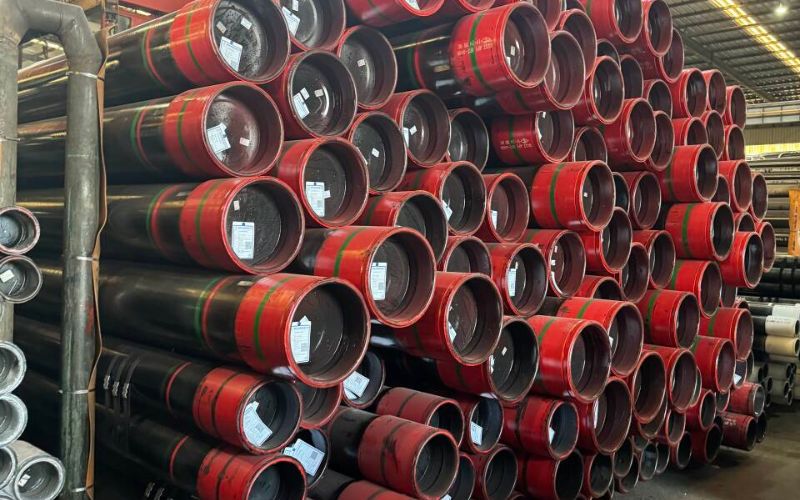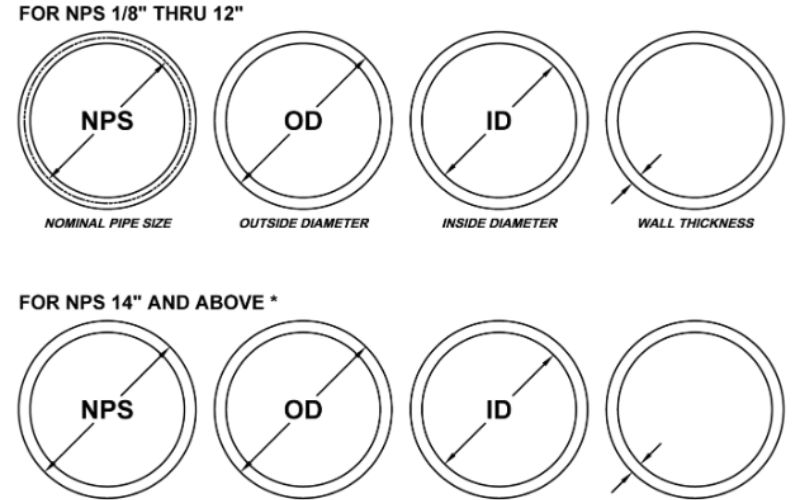Hot dip galvanized steel has great use in modern-day building, manufacturing, and infrastructure, being characterized by excellent durability and corrosion resistance. But have you wondered how it is manufactured, why it is better than others, and what some common applications are? This article penetrates the fascinating process of hot dip galvanizing, taking into consideration the advantages and applications that have made it pivotal for the worldwide industries. Be it a builder, manufacturer, or someone just inquisitive about how this innovative material supports the world surrounding us, this guide provides some insights that will keep you abreast. Follow along as we chart the process and benefits of hot-dip-galvanized steel alongside its practical applications that essentially make it a core architect of very durable and reliable solutions.
The Galvanizing Process
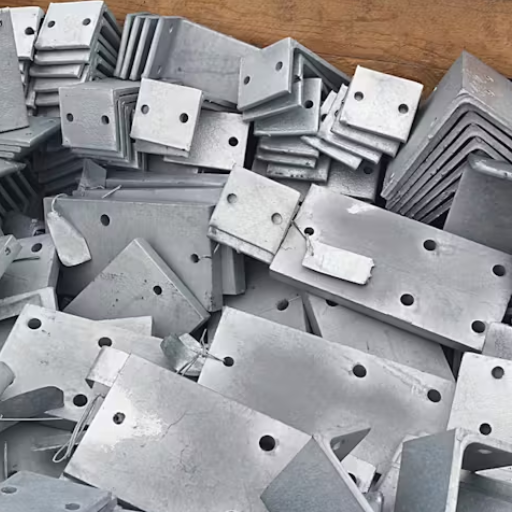
Galvanizing means coating steel or iron with a layer of zinc to protect it against corrosion. In hot dip galvanizing, the metal is cleaned, fluxed, and dipped into molten zinc held at a temperature of approximately 840°F (449°C). The zinc then bonds with the surface of the base metal to produce a very hard protective coating. Protective coating on the zinc by itself renders the metal highly resistant to rust, thereby providing the metal with every kind of environment-based protection and increasing its life-span, an option almost always preferred for structural and industrial purposes.
What is Galvanization?
Galvanization refers to the process of depositing a zinc layer on the surface of metals, the most common being steel or iron, to protect them from corrosion and to add durability to them. Hot-dip galvanization is the most commonly employed method. The process involves thorough cleaning of the steel, treatment with a flux solution, and then dipping it into molten zinc at around 840°F (449°C). With this process, a zinc-iron alloy layer is formed on the surface, producing a very good anticorrosion coating.
In industrial operations, galvanization extends a metal product’s lifespan considerably, depending on its exposure. For example, in rural settings with very low pollution, galvanized steel may survive for as long as 75 years; whereas, in urban or industrial settings, it usually provides protection from the elements anywhere between 20 and 50 years, depending on the degree of exposure. Galvanized coatings take one step further by fully covering the metals-they cover sharp edges, corners, and recesses anywhere that would be vulnerable to rusting under other coatings.
Moreover, the zinc coating offers an additional interesting feature: it acts as a physical barrier while also acting as a sacrificial anode. In other words, even if some zinc is scraped off somewhere and the metal beneath shows patches of bare metal which are exposed to corrosion, the exposed zinc around the bare patch will sacrifice itself by cathodic protection to protect the base metal, thus preventing further spreading of rust. This important property of galvanization makes it a much-valued anticorrosion solution for infrastructures like bridges, gas and water pipelines, construction frameworks, and automotive components.
Cost-effective and environmentally friendly alternatives are offered by galvanization. Galvanization has been observed to significantly reduce maintenance and replacement costs via the zinc coating, thus saving the expenditure of resources over time. These features have made galvanization the popular choice when it comes to shielding metal components against one of their biggest enemies: corrosion.
Hot-Dip Galvanizing Process Explained
Hot-dip galvanizing is a comprehensive process designed to protect steel from corrosion by coating it with a uniform layer of zinc. The process primarily involves three critical stages—surface preparation, galvanizing, and inspection.
- Surface Preparation
This is the most important step, ensuring the steel is adequately clean for metallurgical bonding with zinc. It typically includes three sub-processes:
Degreasing/Caustic Cleaning: Removes oil, grease, and dirt from the steel surface.
Pickling: Eliminates mill scale and rust using a bath containing hydrochloric or sulfuric acid. This step ensures a smooth surface for proper zinc adhesion. Statistics show improper cleaning can reduce coating adherence strength by up to 40%.
Fluxing: Applies a flux solution (zinc ammonium chloride), preventing oxidation on the steel before dipping it in molten zinc.
- Galvanizing
After surface preparation, the steel is immersed in a molten zinc bath heated to approximately 840°F (449°C). During immersion, a metallurgical reaction occurs, forming intermetallic layers of zinc alloys that adhere firmly to the steel. The zinc layer provides barrier and sacrificial protection, ensuring longevity. Studies show that hot-dip galvanized steel can last 50 to 75 years in rural environments and 20 to 30 years in urban or coastal areas.
- Inspection
Once the steel is galvanized, it undergoes rigorous inspection to verify conformity to established standards like ASTM A123. This involves both visual checks and measurements. Coating thickness, for instance, is typically verified with magnetic or ultrasonic gauges, with an ideal average thickness range between 75 and 200 microns, depending on the steel’s intended application.
This robust protection method enhances the lifespan and durability of steel components, supporting a wide range of industries. The global demand for hot-dip galvanized steel continues to rise, with the market estimated to grow at a compound annual growth rate (CAGR) of over 5% through 2030, driven by industrial and infrastructural advancements.
Coating Thickness and Quality Control
Hot-dip galvanizing steel is effective depending on its coating thickness. In the interest of corrosion resistance, the steel is ideally put through an appropriate measurement and control of coating, so as to protect it from pestering environmental conditions. Thickness of zinc coatings generally varies from 75 to 200 microns, depending on the purpose of the steel and its environmental exposure.
New quality control systems allow exact monitoring and maintaining processes according to industry requirements. Magnetic thickness gauges, among many other non-destructive methods, provide exact readings for measurement, thus controlling production consistency. Industry data suggest a standard thickness level can increase corrosion resistance by 20%, greatly augmenting the useful life of the steel in infrastructure and construction.
The important standards, such as ISO 1461 and ASTM A123, cover the specifications for coating and its durability in performance. The standards also differ on the application uniformity concerning coating, inspection methods of which include visual inspection and adhesion tests, like the cross-hatch test. With such a high measurement of quality control, manufacturers can satisfy the growing demand of the global market for galvanized steel products that are dependable and durable.
Benefits of Hot Dip Galvanized Steel
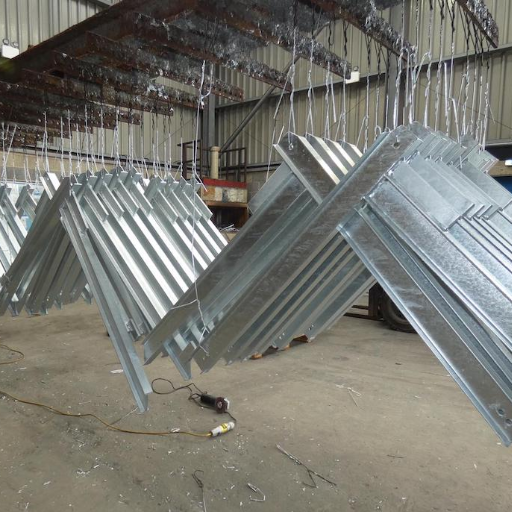
- Corrosion Resistance: It is a tough protective coating that prevents the steel from rusting and being damaged by the environment, further extending its lifespan.
- Low Maintenance: Over its service life, it demands very few maintenance requirements, bringing down costs for users from a long-term perspective.
- Cost-Efficient: An economical choice for a multitude of applications, since it combines low initial expense with great longevity.
- Durability and Strength: Offers better mechanical protection by virtue of the metallurgical bond formed between steel and zinc.
- Sustainability: The zinc coating is fully recyclable, whereas the construction and manufacturing processes are carried out with environmental consideration.
- Versatile: It finds use in a wide array of industries, including construction, automotive, and agricultural.
Superior Corrosion Resistance
Galvanized steel is remarkable for offering unparalleled corrosion resistance and is, therefore, recommended for moisture-laden, humid, and adverse weather setups. The thin zinc coating essentially acts as a physical barrier, stopping corrosive elements from reaching the steel beneath. Galvanized steel could last up to approximately 50 years in the countryside and about 20-25 years in industrial and coastal atmospheres with harsh elements exposure, according to one report.
The galvanized coating is self-healing; once the zinc layer is scratched or damaged, the zinc in the area reacts with the atmosphere to form a protective patina that seals the exposed area. Also, choosing to galvanize can significantly reduce maintenance and replacement costs over time, as the material demands almost no upkeep compared to uncoated steel. This mix of strength, cost efficiency, and durability makes it a very reliable kind of steel to use in anything from infrastructure to automotive components.
Durability and Longevity
Galvanized steel is known for being strong and durable and therefore is an important material in many industries. This is because corrosion greatly contributes to the main manufacturing causes of wear-and-tear on metals, and the zinc coating acts as a corrosive barrier. According to reports, well-galvanized steel may well last for more than 50 years under a rural atmosphere and up to 25 years in regions having high humidity or industrial pollution, thereby guaranteeing the structure to stay intact for a long time.
On the other hand, the coating offers self-healing abilities: within a few hours, any minor scratch or damage on the surface is protected against corrosion by the surrounding zinc. This minimizes repair or replacement costs, which can be substantial in large projects or infrastructural investments. Research indicates that maintenance costs are generally cut by 50% for structures built out of galvanized steel when compared to their non-galvanized counterparts.
Its longevity further increases sustainability since it decreases the volume of resources needed for replacements or repairs over time. The ability to survive harsh environments combined with its economic benefits and eco-friendliness makes galvanized steel an incomparable choice for industries ranging from construction to energy and transportation. Given its reliability, it guarantees that essential infrastructure such as bridges, pipelines, and electrical towers stay functioning optimally for decades.
Cost-Effectiveness Over Time
Being durable and requiring almost no maintenance, galvanized steel is highly cost-effective throughout its life cycle. In fact, sources report that galvanized structures such as bridges and pipelines remain functional for at least 70 years in most environments with only slight corrosion. The zinc coating drastically lowers upkeep costs by lessening repair or replacement frequency.
Treasury steel is the material with the least total cost of ownership when held against some other major materials, like non-treated steel or composites. Maintenance-wise, it may be a very expensive option; recent data reported maintenance costs for non-galvanized steel outpacing 30% of initial material costs within the first 20 years, while galvanized steel cost a fraction. Furthermore, the industries applying the use of galvanized steel incur less downtime, thereby increasing operational efficiency and profit maximization.
This long-term aspect of galvanized steel makes it an economically sound choice for construction, infrastructure, and manufacturing industries. By accounting for upfront costs and unparalleled lifetime of galvanized steel, businesses will acquire budgetary advantage and have later-stage operations with fewer interruptions.
Applications of Hot Dip Galvanized Steel
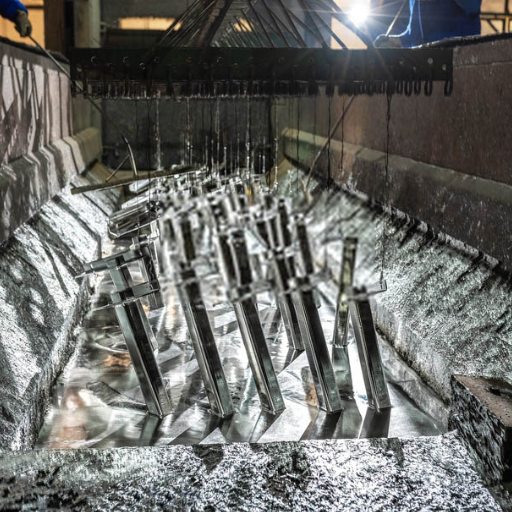
The wonders that hot dipped galvanized steel goes through in different disciplines could range from manufacturing, corrosion resistance, economics, and applicability. Some are as follows:
- Construction: Structural frameworks, roofing, and safety barriers are common applications of hot-dip galvanized steel.
- Infrastructure: Due to its long-term protection in harsh environments, the structure consists of bridges, highways, and utility poles.
- Manufacturing: Where durability is required, the tool is made of machinery and automobile.
- Agriculture: It is popular for fencing, grain silos, and irrigation systems, resisting moisture and chemicals.
- Energy: Mostly used in renewable energy structures, wind turbines, and solar panel mounts.
This includes applications that portray its versatility and dependability across various tough environments.
Common Uses in Construction
Steel remains one of the most indispensable materials in modern construction, offering a combination of strength, durability, and sustainability. It is widely used in various aspects of construction due to its ability to withstand extreme weather, heavy loads, and high levels of stress. Below are some key areas where steel plays a critical role:
- Structural Frames: Nearly 46% of global steel production is used for constructing buildings, including skyscrapers, bridges, and industrial facilities. Steel’s high tensile strength makes it perfect for load-bearing frameworks that contribute to safety and stability in construction.
- Reinforced Concrete: Steel reinforcement bars (rebar) are essential for enhancing the tensile strength of concrete. This application is particularly prominent in large projects like dams, highways, and tunnels, which require significant durability under stress.
- Prefabricated Buildings: The trend toward modular and prefabricated structures heavily relies on steel due to its precision manufacturing and ability to be easily transported and installed. This results in faster construction times and reduces labor costs.
- Roofing and Cladding: Galvanized steel is a popular choice for roofing sheets and wall cladding, as it provides superior weather resistance and requires minimal maintenance over time. Studies show steel roofing can last over 50 years in most environments.
- Sustainability Projects: With increasing attention on green building practices, steel is frequently used in sustainable construction projects. It is 100% recyclable and contributes to achieving LEED (Leadership in Energy and Environmental Design) certifications.
These examples demonstrate steel’s versatility and importance in advancing construction efficiency and environmental responsibility. Its continued innovations, such as high-strength alloys and lightweight designs, are shaping the future of the construction industry.
Hot Dip Galvanized Fasteners
Hot dip galvanized fasteners find importance in construction and engineering projects, especially in environments where durability and corrosion resistance are crucial. The galvanizing process refers to watering zinc on the surface steel fastener with molten zinc, coming to an excellent contact. The stuff acts as a rusting barrier to steel, even under such severe exposure as in coastal conditions or in an industrial environment.
Due to their long life and cheap maintenance, these fasteners have gained significant trust. It is said that these coatings can withstand over 50 years’ worth of life in rural/agricultural environments and around 20 to 30 years in urban/industrial situations before entering significant maintenance. Further, they conform to a global standard specification ASTM A123 and thus can be well regarded in structurally specifying applications.
They also pose an option for environmentally friendly materials in construction. Zinc is 100% natural and recyclable. A galvanizing process has low-waste output. This specification fits well into sustainable construction materials where reducing environmental impact is one of the priorities.
The fasteners are utilized for fastening structural steel for bridges and commercial buildings, as well as in the outdoors for wire fencing and street lighting. Their abrasion resistance and powdery surface mean no damage during transit or assembly of demanding projects.
Hot dip galvanized fasteners are, therefore, still very much at the heart of any construction project aimed at strength, sustainability, and resilience.
Industrial Applications and Steel Products
Steel products find importance in many industrial applications that require versatility, durability, and strength. Construction, transportation, energy, manufacturing, etc., all these fields depend on a variety of steel materials, such as steel sheets, coils, bars, structural beams, and others. By way of example, structural steel is heavily used in building bridges, commercial buildings, and infrastructure projects with the ability to provide excellent load and to hold over decades under rigorous cherishing conditions.
However, recent trends show a rise in the demand for stainless steel in oil and gas, automotive, and renewable energy industries. The stainless steel is used in pipelines, electric vehicle components, and wind turbine structures owing to its resistance to corrosion, tensile strength, and working capacity in extreme temperatures. The industry reports show that the global steel market is predicted to rise by a Compound Annual Growth Rate (CAGR) of about 3.7% from 2023 to 2028, indicating the crucial role of the steel in economic development and industrial progress.
Also, Advanced High Strength Steels are widely used in automobile manufacturing due to their lightweight properties, which improve fuel efficiency and carbon emission reduction. Fasteners like hot dip galvanized bolts and nuts are crucial for structural improvements to guarantee the credibility of sectors from construction to aerospace. With these innovations, steel again makes a strong case for being the material of choice for today’s industrial needs.
Understanding the Coating
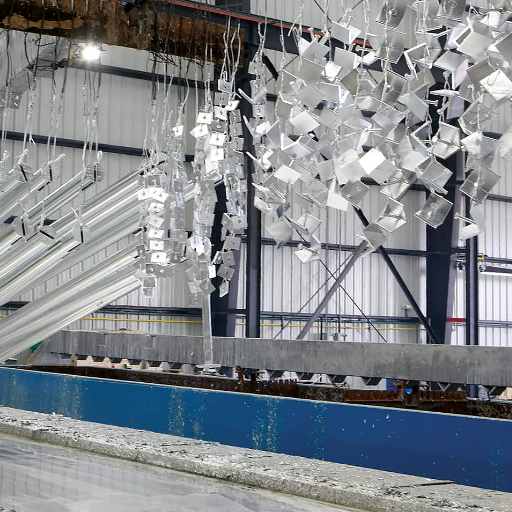
Coatings contribute significantly to improving the durability and performance of steel. They are the agents of protection from corrosion, against wear, and sometimes can improve the appearance of the material. Among the common coatings is hot dip galvanization, involving the coating of steel with a layer of zinc to prevent rusting and aging of the material. It is especially helpful in areas exposed to moisture or harsh conditions. These coatings, when selected correctly, can increase the life and reliability of steel components significantly in respective applications.
Composition of the Galvanized Coating
The galvanized coating primarily consists of pure zinc with a small percentage (0.2–0.3%) of aluminum, while galvannealed coatings include approximately 10% iron.
|
Key Point |
Galvanized Coating |
Galvannealed Coating |
|---|---|---|
|
Main Element |
Pure zinc |
Zinc with ~10% iron |
|
Aluminum |
0.2–0.3% |
0.2–0.3% |
|
Iron |
Minimal |
~10% |
|
Durability |
High |
High |
|
Adhesion |
Excellent |
Improved for painting |
|
Corrosion |
High galvanic protection |
Slightly less galvanic protection |
Factors Affecting Corrosion Resistance
Corrosion resistance in galvanized coatings is influenced by a variety of factors that determine its effectiveness and durability in different environments. Understanding these factors can guide manufacturers and users in selecting and maintaining the appropriate coating for specific applications.
- Coating Thickness
Thicker galvanized coatings generally provide higher corrosion resistance as they contain more zinc, which acts as a protective barrier. Studies show that increasing the thickness of the coating can extend the time to first maintenance by up to 20 years in mild environments. Measurement tools such as magnetic gauges or ultrasonic methods can help ensure consistent thickness.
- Environmental Conditions
The level of moisture, pollution, and exposure to salts significantly affects the corrosion rate. For instance, coastal or industrial areas with high saline or acidic exposure can accelerate zinc corrosion. Data from environmental studies reveal that galvanized steel exposed to marine conditions may corrode at a rate of 4-5 µm annually, compared to 1 µm in rural areas.
- Temperature
Both extreme hot and cold environments impact the coating’s ability to resist corrosion. Zinc coatings typically perform well in a temperature range of -40°F to 250°F. However, exposure over prolonged periods at temperatures above 390°F may weaken the coating due to zinc oxidation.
- Impurities in Steel
The steel’s composition, including impurities such as copper, silicon, or phosphorus, can alter the adhesion and uniformity of the galvanized layer. Steel with controlled low silicon content (<0.03%) ensures a more stable coating, reducing the risk of localized corrosion.
- Exposure Time to Wetness (Time of Wetness – TOW)
TOW is a critical factor that impacts corrosion resistance. Galvanized coatings exposed to prolonged periods of wet or humid conditions will corrode faster. Research has found that reducing TOW by utilizing proper drainage and ventilation systems can improve the lifespan of coated steel by up to 30%.
- Mechanical Wear and Abrasion
Physical wear and abrasive conditions can damage the protective layer, exposing the underlying steel to moisture and corrosion. Regular inspections and utilizing additional protective measures, such as sealants in high-friction zones, can mitigate this issue.
- Post-treatment Processes
The addition of chromate or phosphate passivation layers after galvanization can enhance corrosion resistance. Chromate coatings, for instance, have been shown to reduce corrosion rates by more than 50% in salt spray tests.
- Design and Maintenance
Proper design elements, such as avoiding sharp edges or crevices, promote uniform galvanization and prevent areas prone to corrosion. Routine maintenance practices like cleaning and touch-ups can extend the lifespan of the galvanized coating.
By addressing and optimizing these factors, galvanized steel can offer a highly effective and durable solution for combating corrosion in diverse applications.
Differences Between Hot-Dipped and Other Coatings
Hot-dipped galvanizing provides a thicker, self-healing zinc coating with superior durability, while other coatings like zinc plating and epoxy are thinner, less durable, and lack self-healing properties.
|
Key Point |
Hot-Dipped |
Other Coatings |
|---|---|---|
|
Thickness |
2–8 mils |
0.2–0.5 mils (zinc plating) |
|
Durability |
High |
Moderate |
|
Self-Healing |
Yes |
No |
|
Process |
Immersion in molten zinc |
Electroplating or spraying |
|
Coverage |
Complete |
Limited |
|
Corrosion |
Superior resistance |
Less effective in harsh environments |
|
Cost |
Higher upfront, lower lifecycle |
Lower upfront, higher maintenance |
Choosing Hot Dip Galvanized Steel
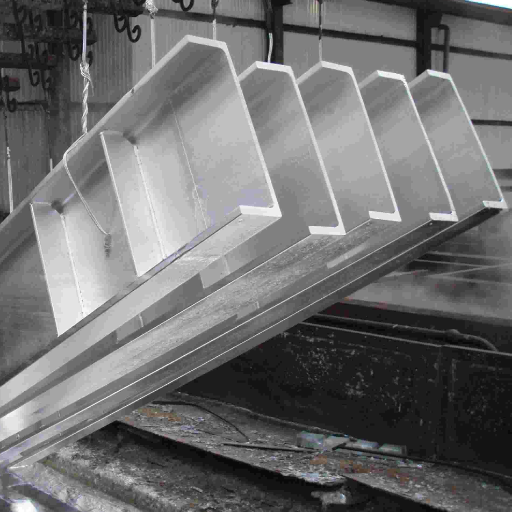
The galvanization of steel offers protection against corrosion while also being cheap and long-lasting. The process, in fact, applies a zinc-rich coating very strongly bonded to the base steel so that the environmental elements like moisture and air cannot induce rusting. Its ability to last long prevents frequent repairs and replacements, allowing for major savings in the long term. Furthermore, hot dipping is well-understood, providing reliability, so it is being considered in all industrial fields like construction, agriculture, and transport. If a proven method from the past for long-term protection of steel is sought, then zinc galvanized steel clearly remains among the most dependable ones.
Evaluating Steel Coils for Projects
While buying steel coil for the working projects, I tend to identify the basic parameters such as the material specifications, durability, and cost-effectiveness. The grade, thickness, and finish of the coil are checked first to see whether they fit within the specifications needed for the project. If the material is to be installed in a rough atmosphere, then I must see to it that the material’s corrosion-resistant behavior and life span are taken into consideration. Additionally, the budget plays an essential role, as one needs to maintain a balance between price and quality for a successful project. By taking these factors into consideration, I get to choose steel coils that provide performance and value.
Standards and Specifications
When choosing steel coils, following standard guidelines and specifications is quite important to confirm the quality, safety, and performance of a product. International standards from ASTM, ISO, and EN exist, describing the chemical composition, mechanical properties, and testing methods applicable for steel coils. In terms of ASTM grades and applications, ASTM A36 is commonly used for structural purposes due to a perfect balance of strength and ductility, whereas ASTM A653 pertains to galvanized steel, which is intended to resist corrosion thanks to a zinc coating.
The thickness of steel coils is defined through the use of a set of tolerances, commonly ranging between 0.14 mm and 16 mm for standard applications. Depending on its variability, tolerance may greatly affect the performance of coils, especially for those in the automobile or construction industries that require a lot of uniformity from the supplied product. The surface finish, on the other hand, is classified by standards according to project requirements for appearance and function; some examples are the Bright Finish (BF) or Matte Finish (MF).
In terms of corrosion resistance, higher chromium content (stainless steel coils classified according to the AISI 304 or 316 standard) is considered the best option in interior environments where moisture exposure abounds, among other chemical attacks. It gave tensile strength another thought, considering other applications of higher specification, such as HSLA (High-Strength Low-Alloy) steel, for heavy-duty activities.
From a certifying point of view, the material certificates and mill test reports provide all the necessary data, which include conformity to specifications used, mechanical properties, and chemical compositions, all guarantee traceability for quality assurance throughout the supply chain. This ensures that the entire process is optimized for performances while fulfilling the very differing demands of modern industrial applications.
Environmental Considerations in Galvanization
Galvanization is usually considered a process to increase the durability and longevity of steel products, but several aspects regarding its environment still need to be addressed by evolving processes and technologies. Zinc, the main material in galvanization, is a natural element; it can be recycled indefinitely without losing quality. Therefore, the process is rightly said to be sustainable, as it generates very little waste, and the leftover material is recycled into other uses by the galvanized metal industry.
However, from an environmental point of view, the process involves operations that consume excessive amounts of energy and are high in chemical content. If they are not properly managed, this will become a concern. For instance, these concerns arise from greenhouse gas emissions or disposal of residues such as zinc ash and dross. Minimizing waste and emissions into the environment has been greatly improved through industrial innovations employing closed-loop systems, as highlighted in various environmental studies. Today, most modern galvanizing plants make use of such closed-loop systems to recycle water and limit the amount of harmful substances discharged into the ecosystem.
In life-cycle assessments (LCA), galvanized steel is commonly argued to have its longer service life and lower need for maintenance as components that lessen its environmental footprint. Galvanized structures, for example, are often not replaced as often as untreated ones, so energy and raw materials are saved over time. Technology-wise, low-temperature galvanizing processes represent one of the current trends in cutting energy consumption by up to 15%, which thus contributes to greener productions.
Regulatory measures affirm compliant and sustainable practices through ISO 14001 standards for environmental management, encouraging companies to focus particularly on energy efficiency, material use optimization, and adoption of clean technology, thus supporting the bigger goal of sustainability.
Working with concepts of recycling, energy efficiency, and strict environmental standards today, this industry continues to grow in step with planetary needs of trying to balance industrial establishment with environment. These developments really indicate strong propitious foresight for galvanization becoming continuing sustainable process in a wider scope.
Reference Sources
- Corrosion Fatigue Degradation Characteristics of Galvanized and Galfan High-Strength Steel Wire
- Authors: Yue Zhao et al.
- Journal: Materials
- Publication Date: January 1, 2023
- Citation Token: (Zhao et al., 2023)
- Summary: This study investigates the corrosion characteristics of galvanized steel wire compared to Galfan steel wire through accelerated corrosion tests. It establishes a time-varying model for uniform and pitting corrosion and analyzes the corrosion fatigue degradation under traffic loads. The findings indicate that Galfan steel wire exhibits significantly better corrosion resistance than galvanized steel wire, especially under low traffic intensity.
- Methodology: The research involved accelerated corrosion tests and statistical analysis of corrosion coefficients, with a focus on the service life of both types of steel wire under varying traffic conditions.
- Effects of Ambient Temperature and State of Galvanized Layer on Corrosion of Galvanized Steel in High-Humidity Neutral Atmosphere
- Authors: Yusong Liang et al.
- Journal: Materials
- Publication Date: May 1, 2023
- Citation Token: (Liang et al., 2023)
- Summary: This paper examines how ambient temperature and the condition of the galvanized layer affect the corrosion of galvanized steel in a high-humidity environment. The study finds that damaged galvanized steel retains good corrosion resistance at lower temperatures but experiences accelerated corrosion at higher temperatures.
- Methodology: The authors conducted experiments with different types of specimens in a controlled high-humidity environment, measuring weight changes and analyzing corrosion products.
- Corrosion performance of hot-dip galvanized zinc-aluminum coated steel rebars in comparison to the conventional pure zinc coated rebars in concrete environment
- Authors: A. Al-Negheimish et al.
- Journal: Construction and Building Materials
- Publication Date: March 8, 2021
- Citation Token: (Al-Negheimish et al., 2021, p. 121921)
- Summary: This study compares the corrosion performance of hot-dip galvanized zinc-aluminum coated rebars with conventional pure zinc coated rebars in concrete environments. The findings suggest that zinc-aluminum coatings provide superior corrosion resistance, enhancing the longevity of the rebars in concrete applications.
- Methodology: The research involved experimental testing of different rebar types in concrete, assessing their corrosion rates and performance over time.
Frequently Asked Questions (FAQs)
What is hot-dipped galvanized steel and how is it made?
Hot-dipped galvanized steel is a type of steel that has been coated with a layer of zinc through a galvanization process. This involves dipping the steel into a bath of molten zinc, which creates a metallurgically bonded protective coating. The process results in a thicker coating compared to other methods, offering superior corrosion resistance and protection against rust.
How does the galvanizing process enhance corrosion protection?
The galvanizing process enhances corrosion protection by creating a series of zinc-iron alloy layers on the surface of the steel. This protective zinc coating acts as a barrier against moisture and environmental elements, significantly reducing the risk of rust and corrosion over time. Additionally, the zinc itself provides cathodic protection, which means it can corrode in place of the underlying steel.
What are the benefits of using hot-dip galvanized steel in construction?
Hot-dip galvanized steel offers numerous benefits in construction, including long-lasting durability and strength. The thicker coating provides enhanced corrosion resistance, making it ideal for outdoor and harsh environments. Moreover, its ability to withstand rust and corrosion reduces maintenance costs and extends the lifespan of structures built with galvanized steel.
Can hot-dipped galvanized steel be welded?
Yes, hot-dipped galvanized steel can be welded, but it requires special consideration. The zinc coating can produce fumes during welding, which may be hazardous if inhaled. It’s essential to follow proper safety protocols and consider techniques such as galvannealing, which modifies the zinc layer to improve weldability without compromising corrosion resistance.
What is the difference between hot-dip galvanizing and other galvanization methods?
The main difference between hot-dip galvanizing and other methods, such as electro-galvanizing, is the thickness of the coating. Hot-dip galvanizing produces a thicker coating that provides superior corrosion protection, while electro-galvanizing offers a thinner layer, which may be suitable for indoor applications but lacks the same level of durability in outdoor conditions.
How does the coating thickness affect the performance of galvanized steel?
Coating thickness plays a crucial role in the performance of galvanized steel. A thicker coating provides better resistance to corrosion and longer-lasting protection against rust. The hot-dip galvanizing process typically results in a thicker coating compared to other methods, making it more suitable for environments where steel is exposed to moisture and corrosive elements.
What is the role of zinc in hot-dip galvanized steel?
Zinc plays a vital role in hot-dip galvanized steel as it serves both as a protective barrier and a sacrificial anode. When exposed to moisture, zinc corrodes preferentially to the underlying steel, preventing rust from forming. Additionally, the zinc patina that develops over time enhances the steel’s corrosion resistance, ensuring long-term durability.
What are the manufacturing capabilities of leading companies in hot-dip galvanizing?
Leading companies in hot-dip galvanizing possess advanced manufacturing capabilities, including state-of-the-art galvanizing kettles and automated processes. These companies can efficiently produce high-strength steel products with consistent coating thickness and quality, ensuring that their galvanized steel meets industry standards for corrosion resistance and durability.



